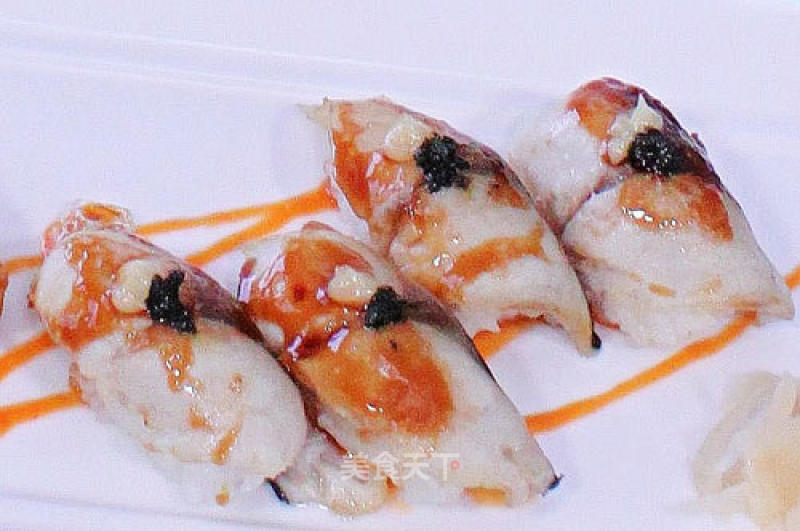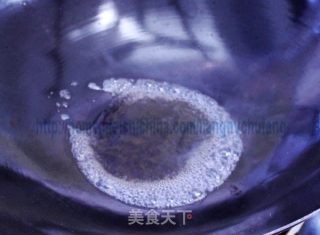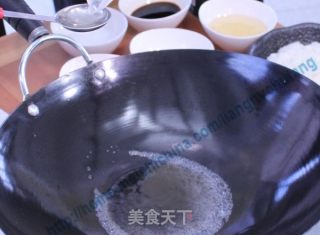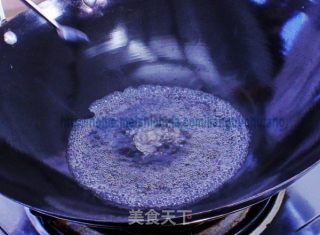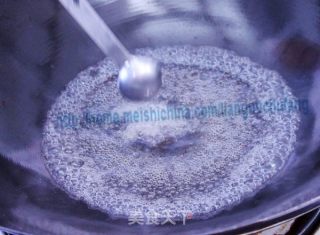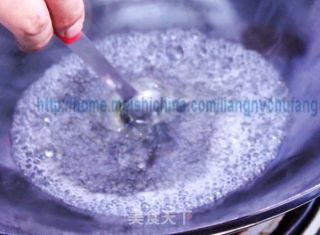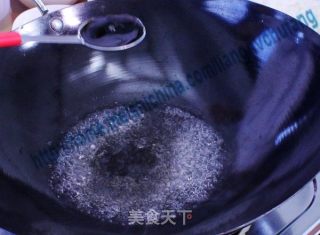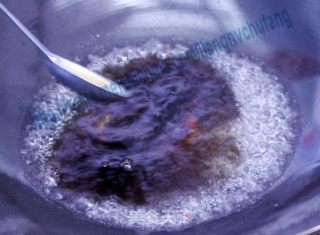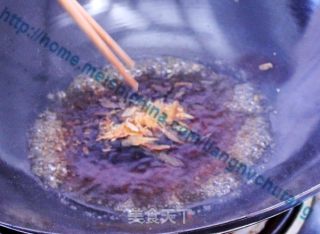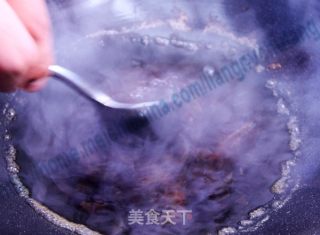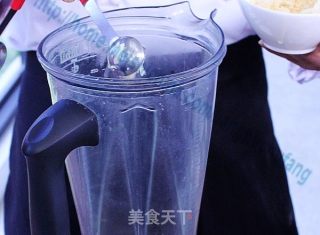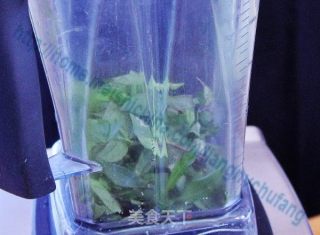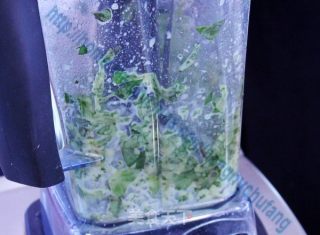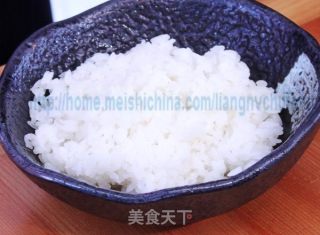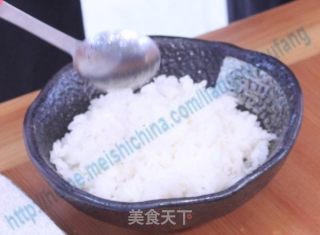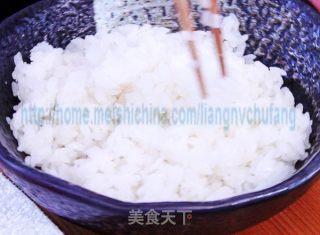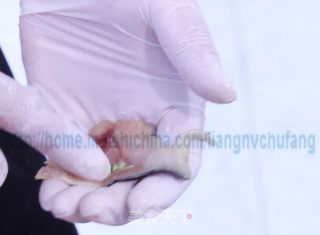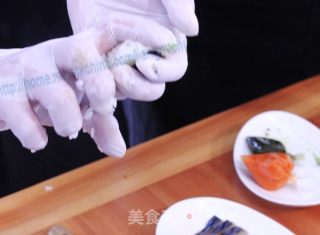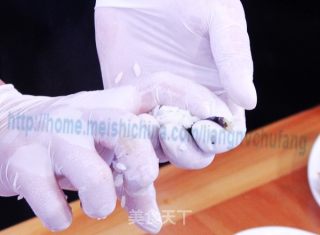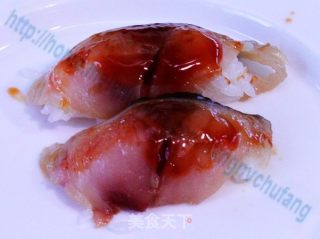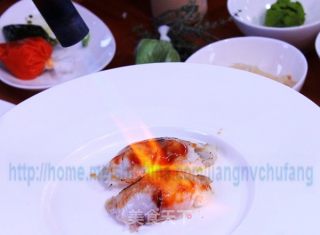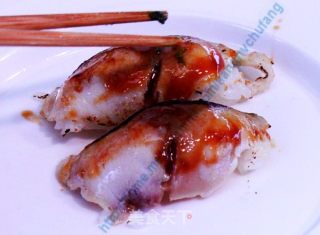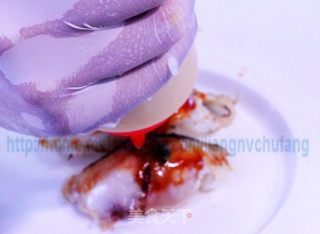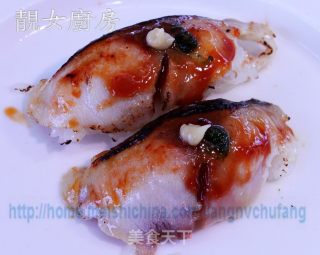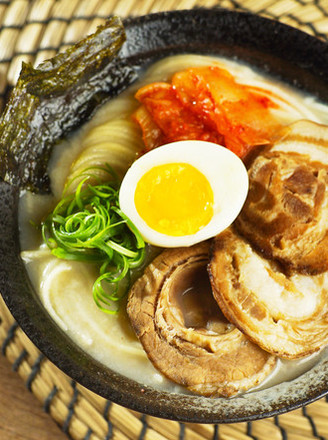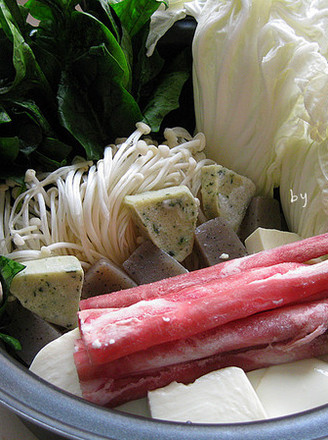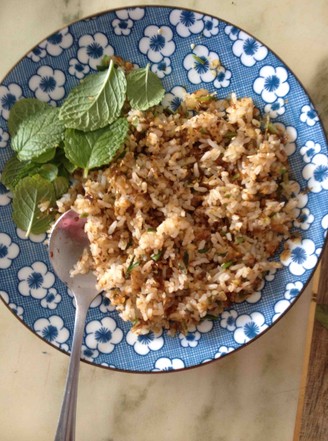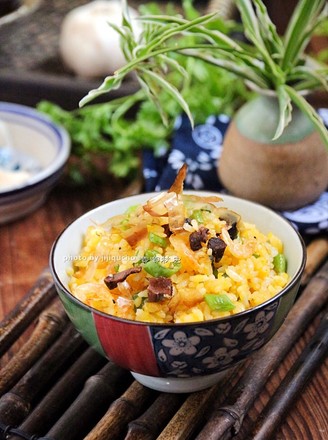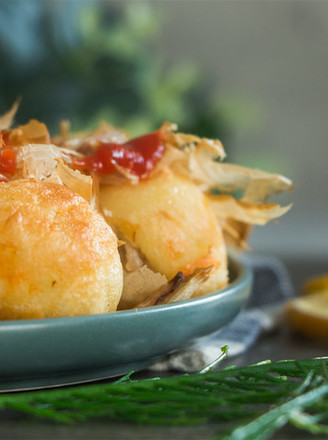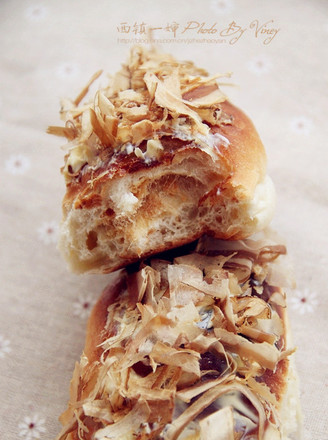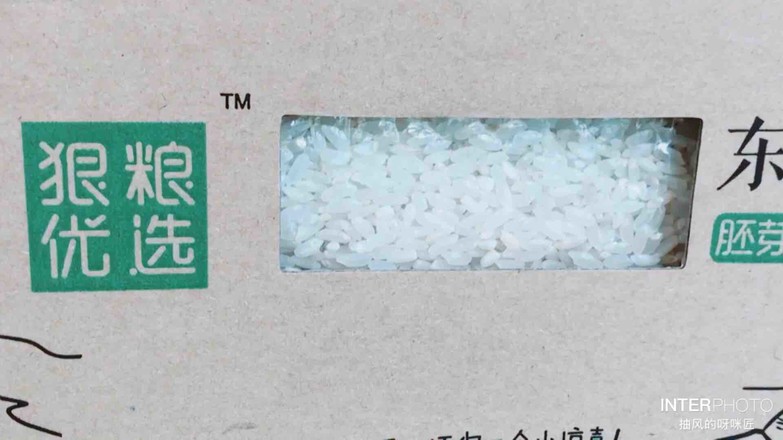Japanese Style Fishy-free Mackerel Sushi (with Japanese Authentic Teriyaki Sauce, Green Sauce, Homemade Vinegar Rice)
by Pretty girl kitchen
Favorite
Difficulty
Hard
Time
30m
Serving
2
There are many types of sushi. This is called nigiri sushi, which belongs to Edogawa sushi.
Authentic Japanese sushi is not fishy at all, because the freshness of the ingredients and the correct method will only give the fish a sweet and smooth taste.
Soak your hands in ice water before making sushi. In a short time, you can lower the temperature of your hands and cool the oil on your hands, so that your hands can avoid getting fish meat, which will affect the taste of sushi.
Especially sashimi, you should not touch it directly with warm hands, it will affect the freshness of the fish. Usually prepare a basin of ice water, place your hands in the ice water for a few seconds before making sushi, and then start making sushi. Once the hands start to heat up, put them in the ice water to cool down. In addition, the temperature on the palm of the hand is low, and the sushi rice is not so easy to stick to the hand.
Deboning sashimi is a very professional knowledge. Be sure to pay attention to the tendons and textures, cut against the grain, and cut through it once, so as not to damage the fiber of the fish and reduce the loss of water. The sashimi will not be easy to mold and lose elasticity.
This is basic knowledge. Because the main umami taste and nutrients of fish are concentrated in the tendons and textures, they can only be preserved by cutting them against the grain. The knife is the soul of cutting fish. The better the knife, the easier it is to retain the umami taste of the fish. You also need to chill the knife on ice before cutting. "
Authentic Japanese sushi is not fishy at all, because the freshness of the ingredients and the correct method will only give the fish a sweet and smooth taste.
Soak your hands in ice water before making sushi. In a short time, you can lower the temperature of your hands and cool the oil on your hands, so that your hands can avoid getting fish meat, which will affect the taste of sushi.
Especially sashimi, you should not touch it directly with warm hands, it will affect the freshness of the fish. Usually prepare a basin of ice water, place your hands in the ice water for a few seconds before making sushi, and then start making sushi. Once the hands start to heat up, put them in the ice water to cool down. In addition, the temperature on the palm of the hand is low, and the sushi rice is not so easy to stick to the hand.
Deboning sashimi is a very professional knowledge. Be sure to pay attention to the tendons and textures, cut against the grain, and cut through it once, so as not to damage the fiber of the fish and reduce the loss of water. The sashimi will not be easy to mold and lose elasticity.
This is basic knowledge. Because the main umami taste and nutrients of fish are concentrated in the tendons and textures, they can only be preserved by cutting them against the grain. The knife is the soul of cutting fish. The better the knife, the easier it is to retain the umami taste of the fish. You also need to chill the knife on ice before cutting. "

